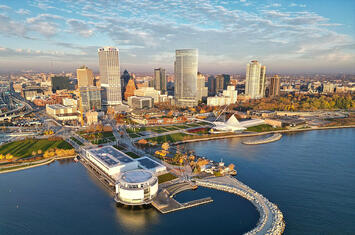
Anyone who follow me here knows I write quite a bit about Midwestern cities. They’re what I know best and love most. They’re chronically under-discussed in American urbanist discourse, where most of the talk is about the pros and cons of the coastal or Sun Belt cities. Fair enough. That’s where the money is made and the people are moving.
I write critically about Midwestern cities because they can be better. But every once in a while it’s good for me to remember why I do this. The Midwest’s cities have fabulous assets that are rarely recognized, at least on a national scale. And those assets are the fundamental pieces that can catalyze their revitalization. So let’s look at the assets that set Midwestern cities apart.
They are actual cities. you want a great downtown experience? It's here. You want cool neighborhoods? They're all around here. You want a fantastic restaurant scene? The possibilities are endless. You want music, concerts and events? We have them. And you want it all in a walkable environment? You can find it here, because they have a pre-WWII development foundation that gives them the real urban feel.
Wealth of cultural resources. Chicago has a wonderful collection of museums and other cultural amenities that allows it to compete with any large city on the globe. The city’s Griffin Museum of Science and Industry, Art Institute and Field Museum of Natural History are among the most visited museums in the nation, and are internationally recognized for their collections and research. Cleveland, Detroit, Indianapolis, Milwaukee, Minneapolis and Pittsburgh each have museums that rank among the largest in the world in exhibition space, a legacy of their industrial pasts.
Excellent architecture. This article from from iF Design captures the significance of the Midwest on 20th century architecture. Architect Josh Lipnik’s quote on Midwestern places to visit for architecture sums it up: “Chicago for the early skyscrapers, wealth of modernist architecture, and the works of Louis Sullivan and Frank Lloyd Wright. Detroit for the early industrial architecture of Albert Kahn and the Art Deco skyscrapers. Cincinnati for the intact 19th century neighborhoods and Victorian streetscapes.”
Pleasant quality of life. You can take a U.S. News and World Report’s list of the "Best cities in the U.S. to Live for a Great Quality of Life" with a grain of salt. Be that as it may, it still highlights the Midwest for one thing that it’s well known for – a great quality of life. Its 2024 list of the 25 best cities by their quality of life metrics is topped by Ann Arbor, MI, with six other Midwestern cities – Madison, WI, Kalamazoo, MI, South Bend, IN, Grand Rapids, MI, Pittsburgh, PA and Green Bay, WI – making the list. Perhaps they’re smaller than many would urban-oriented people would like; on this list only Pittsburgh and Grand Rapids have metro areas with more than one million residents. However, some have easy access to nearby major cities (Ann Arbor is 45 minutes from Detroit, Madison is 75 minutes from Milwaukee, and South Bend is a 90 minute drive from Chicago, but also connected by commuter rail) that put you close to major city amenities.
Read the rest of this piece at The Corner Side Yard.
Pete Saunders is a writer and researcher whose work focuses on urbanism and public policy. Pete has been the editor/publisher of the Corner Side Yard, an urbanist blog, since 2012. Pete is also an urban affairs contributor to Forbes Magazine's online platform. Pete's writings have been published widely in traditional and internet media outlets, including the feature article in the December 2018 issue of Planning Magazine. Pete has more than twenty years' experience in planning, economic development, and community development, with stops in the public, private and non-profit sectors. He lives in Chicago.
Photo: BF Kenney via Wikimedia under CC 4.0 License.












